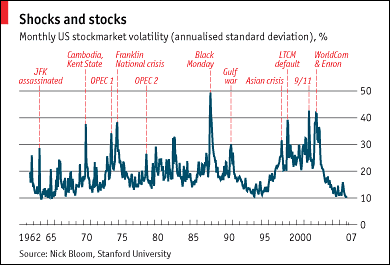This sunday's New York Times had a column by Mark Hulbert that describes research by a group of finance and law professors arguing that hedge fund activist interest is good for share values for up to a year:
A Good Word for Hedge Fund Activism (Feb. 18, 2007). This would contradict the negative image held by some people that hedge funds are solely concerned about short-term profit and may not enhance shareholder value for relatively long periods.
The research -- consisting of a working paper,
Hedge Fund Activism, Corporate Governance, and Firm Performance, by a cadre of finance and law professors -- does bolster some of of Mark Hulbert's points. However, a slightly closer perusal of the original research paper reveals that the Times article is being a bit too optimistic about the benefits of hedge fund activism.
As the paper makes clear, a lot of the abnormal returns from hedge funds taking substantial positions -- by 'substantial,' I mean the 5% or more of company's outstanding shares that need to be acquired to trigger securities law requirements to file with the the Securities and Exchange Commission (SEC) -- in targeted companies come from the actual or implied hostility of the acquisition (e.g., disagreement with management about business strategy or sale of the company). Hedge fund activities that targeted more mundane corporate governance issues did not generate much in the way of abnormal returns.
Furthermore, the data set that the researchers looked at seem to me to be somewhat limited. This limitation is due to the fact that hedge funds have limited reporting requirements with the SEC and other financial regulatory authorities (hence their appeal to some investors). The data that the research looks at is limited to acquisitions of publicly traded shares that are substantial enough to trigger reporting requirements. By no means does this data set represent the bulk of hedge fund activities.
One final bit of info worth noting is that one of the authors of the working paper is
Frank Partnoy, a law professor in San Diego. What he is best known for, however, was his stint as a derivatives salesman/trader at Morgan Stanley. He wrote up his experiences at Morgan Stanley in the highly informative and entertaining (but not particularly flattering for Morgan Stanley or his previous employer, CS First Boston) book,
FIASCO: The Inside Story of a Wall Street Trader
... a book that has been favorably compared to the Michael Lewis classic,
Liar's Poker
. While Frank Partnoy is no
Philip Roth, Prof. Partnoy is an excellent writer/story-teller by the standards of financial traders or lawyers.



